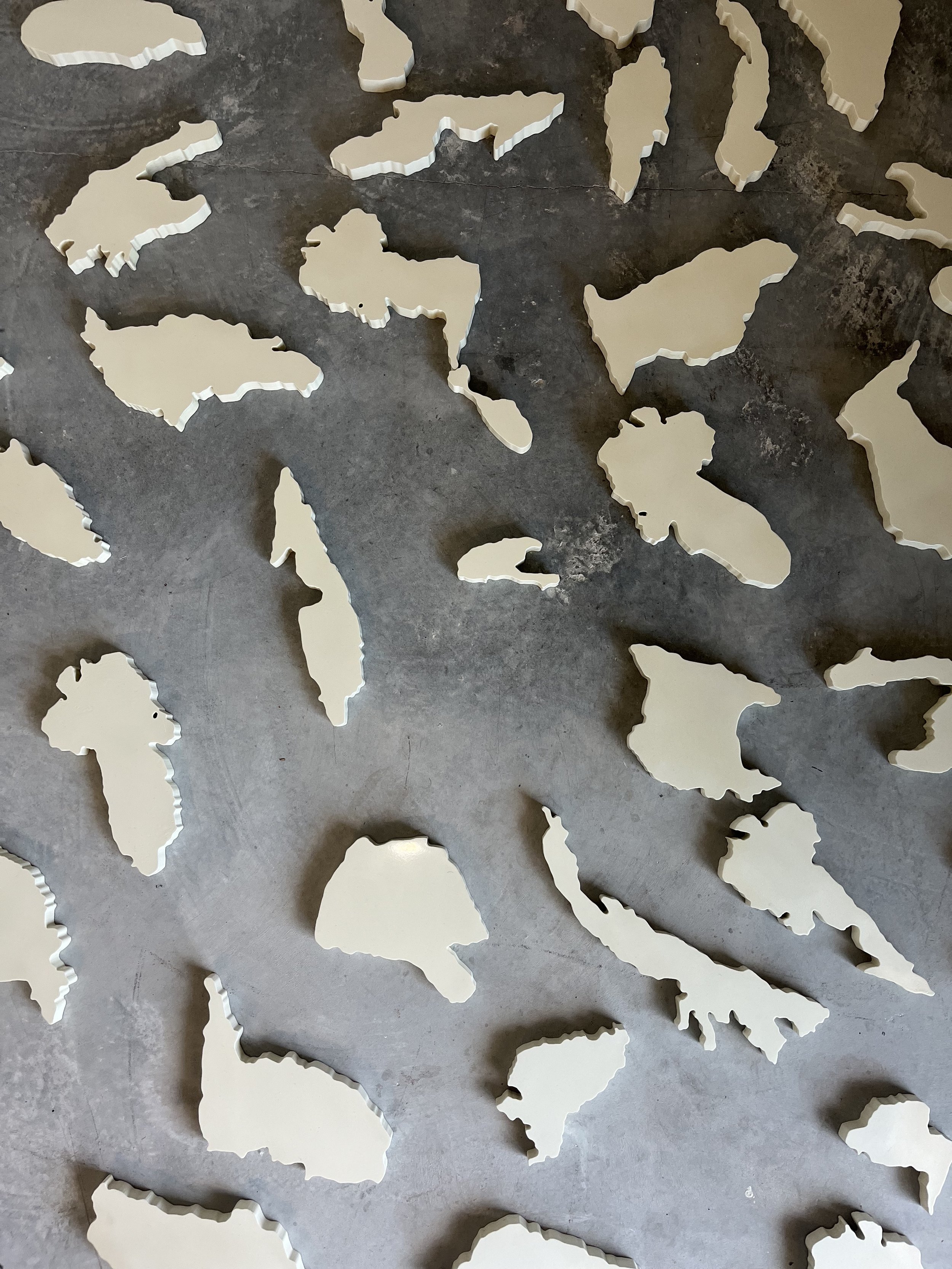
Born in Caracas in 1989, Elisa Bergel Melo currently lives and works in Santo Domingo, Dominican Republic. Working mainly in photography, her practice explores the medium’s relationship with time, reality, and memory. Bergel Melo has shown throughout the Americas and in Basel, Switzerland, and participated in the 2016 SOMA Summer residency in Mexico City.
works
-

The Lysol Prints (2020)
The Lysol Prints were created during the Covid-19 lockdown. Elisa took advantage of the cleaning products that became commonplace in all our lives during quarantine and cleverly combined them with some of her own materials.
This aesthetic solution refers directly to her usual work methodology that is based on the observations of daily customs as solutions, while she makes use of the typical formats within photography, in this case 8x10 sheets.
The final work plays homage to constellations that remind the artist of the diagrams of saliva aerosols that we have now become accustomed to seeing in a post-Covid world, while they also refer to outer space in the form of distant galaxies that Elisa likes to look at on NASA's instagram account. That duality between the domestic and unknown places refers to her own confinement.
-

Final Form (2020)
Borders are a very marked reality in the mind of an emigrant. To many, they are only evident only from the zenith view of a map, alien to any real experience of a geographical limit. These spaces reveal our history but also question the relationship with our neighbors. For this reason, cartography has been a popular discipline among artists in the peripheries that these maps and their borders establish.
The Dominican Republic shares the island of Hispaniola with Haiti. A tense relationship between the two exemplifies on a smaller scale the great migratory problems of the world. Living in the DR and being an alien to both countries, Elisa assimilates the border as a very marked limit that is established at a social, cultural and historical level and from this her need to understand the Caribbean arises.
In search of an alternative to the modernist ideals of progress, Elisa created a new set of caribbean islands in order to undo colonial codes and generate a new territories. She formed 85 fictitious islands from the combination of the 13 islands that make up the Antilles.
By taking things from another perspective, she sets out to create islands that shows the unexpectedness of this reality in order to visualize the vulnerability of the very borders that define our sense of place in the world.


